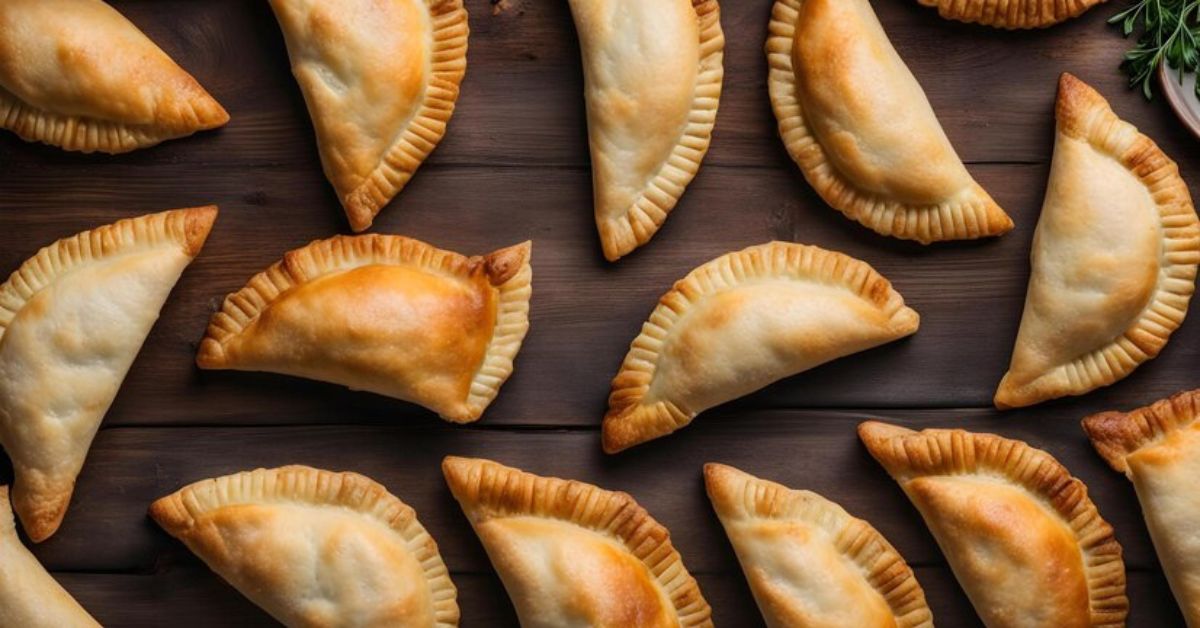Pastelitos are a beloved pastry in Hispanic cuisine, known for their delightful combination of flaky dough and various sweet or savory fillings. Originating from Latin America and the Caribbean, pastelitos have become a staple in Hispanic households and are often enjoyed during special occasions and celebrations.
Popular Varieties of Pastelitos
Among the most popular varieties of pastelitos are:
Guava Pastelitos
These sweet pastries are filled with creamy guava paste, providing a burst of tropical flavor with every bite.
Meat-filled Pastelitos
Filled with seasoned ground meat, such as beef or pork, these savory pastelitos are perfect for a hearty snack or appetizer.
Cheese Pastelitos
Featuring a gooey cheese filling, these pastelitos offer a delightful combination of savory and indulgent flavors.
Spinach and Cheese Pastelitos
A healthier alternative, these pastelitos are filled with a delicious mixture of spinach, cheese, and aromatic spices.
Ingredients and Preparation
The preparation of pastelitos typically involves:
Dough Preparation
The dough is made from flour, butter, and water, rolled out thinly and cut into squares or circles before being filled and sealed.
Filling Options
Pastelitos can be filled with a variety of ingredients, including fruits, meats, cheeses, and vegetables, allowing for endless flavor combinations.
Baking or Frying
While traditionally fried, pastelitos can also be baked for a healthier alternative, resulting in a crispy and golden exterior.
Regional Differences
Different Hispanic cultures have their own variations of pastelitos, such as:
Cuban Pastelitos
Cuban pastelitos often feature flaky puff pastry filled with sweet or savory fillings, such as guava or picadillo.
Puerto Rican Pastelillos
Similar to empanadas, Puerto Rican pastelillos are filled with a variety of ingredients, including beef, chicken, or seafood, and are typically deep-fried until golden brown.
Colombian Pasteles de Pollo
These Colombian pastries are filled with seasoned chicken and vegetables, wrapped in cornmeal dough, and steamed to perfection.
Pastelitos in Hispanic Celebrations
Pastelitos play a significant role in Hispanic celebrations and gatherings, serving as a symbol of tradition and togetherness.
Role of Pastelitos in Festivals and Gatherings
Whether it’s a birthday party, holiday celebration, or family reunion, pastelitos are often a highlight of the menu, enjoyed by people of all ages.
Traditional Occasions for Serving Pastelito’s
From Christmas to Easter and everything in between, pastelitos are a staple at many cultural events and festivities, bringing joy and deliciousness to all who indulge.
Healthier Alternatives and Modifications
For those looking to enjoy pastelito’s without guilt, there are several healthier alternatives and modifications to consider.
Using Whole Wheat Dough
Opting for whole wheat dough adds fiber and nutrients to the pastry, making it a more nutritious option without sacrificing taste.
Incorporating Healthier Fillings
Experimenting with lighter fillings, such as fruits, vegetables, and lean proteins, allows for a healthier twist on this classic treat.
Tips for Perfect Pastelitos
For the best results when making pastelito’s at home, consider the following tips:
Proper Sealing Techniques
Ensure that the edges of the pastelitos are firmly sealed to prevent the filling from leaking during cooking.
Cooking Methods for Crispy Results
For a crispy and golden exterior, fry the pastelito’s in hot oil until they are beautifully browned on all sides.
Pastelitos Around the World
While pastelitos originated in Latin America and the Caribbean, they have gained popularity worldwide, with various cultures putting their own unique spin on this delicious pastry.
Serving Suggestions
To elevate your pastelitos experience, consider serving them with:
A drizzle of honey or syrup for added sweetness.
A dollop of sour cream or salsa for a savory twist.
Fresh fruit or berries for a refreshing accompaniment.
Cultural Significance of Pastelito’s
Beyond their delicious taste, pastelito’s hold deep cultural significance in Hispanic communities, representing heritage, family, and celebration.
Making Pastelitos at Home
For those eager to try their hand at making pastelitos from scratch, here’s a simple step-by-step guide:
Prepare the dough by combining flour, butter, and water until a smooth dough forms.
Roll out the dough thinly and cut into squares or circles using a pastry cutter.
Place a spoonful of filling in the center of each piece of dough.
Fold the dough over the filling to form a triangle or rectangle and seal the edges tightly.
Fry the pastelito’s in hot oil until they are crispy and golden brown on all sides.
Remove from the oil and drain on paper towels before serving hot.
Conclusion
Pastelitos offer a delightful journey into the vibrant and flavorful world of Hispanic cuisine. Whether enjoyed as a sweet treat or savory snack, these beloved pastries bring people together and celebrate the rich cultural heritage of Latin America and the Caribbean.
FAQs
What is the difference between pastelitos and empanadas?
While both pastelitos and empanadas are filled pastries, pastelito’s are typically smaller and made with flakier dough, whereas empanadas are larger and often made with a thicker, bread-like dough.
Can pastelitos be frozen for later consumption?
Yes, pastelitos can be frozen after they are fully cooked. Simply allow them to cool completely, then place them in an airtight container or freezer bag and freeze for up to three months. To reheat, simply bake in a preheated oven until heated through.
Are pastelitos sweet or savory?
Pastelitos can be either sweet or savory, depending on the filling used. Sweet pastelito’s are typically filled with fruits or sweetened cream cheese, while savory pastelito’s may contain meats, cheeses, or vegetables.
How long do pastelito’s stay fresh?
Pastelitos are best enjoyed fresh on the day they are made. However, they can be stored in an airtight container at room temperature for up to two days. To prolong freshness, store them in the refrigerator for up to four days.
Can I use store-bought dough for pastelito’s?
Yes, store-bought puff pastry or pie dough can be used as a time-saving alternative to making homemade dough. Simply follow the package instructions for thawing and rolling out the dough before filling and baking.












